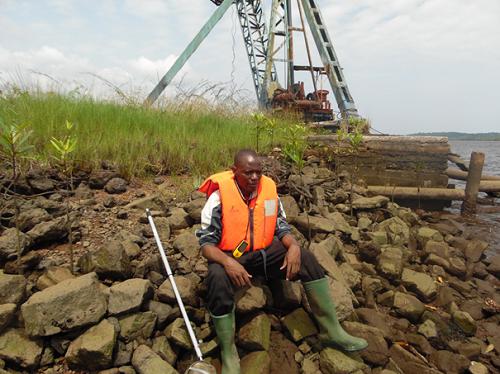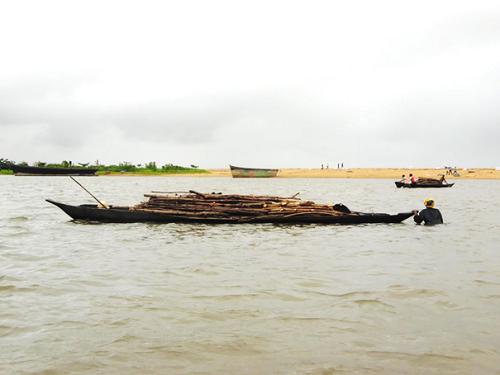Pierre A. Mvogo Ndongo
Other projects
10 Oct 2016
Conservation of the Recently Re-Discovered Endangered Freshwater Crab, Louisea edeaensis (Bott, 1969) on Bedimet Island in the Lake-Ossa Wetlands Complex of Cameroon
21 Feb 2018
Conservation of the Re-Discovered Endangered Freshwater Crab Louisea balssi on Mount Manengouba in the Cameroon Highlands
24 Sep 2019
Conservation and Assessment of the Extinction Risk of a Threatened New Species of Endemic Freshwater Crab Louisea nkongsamba, from Mt. Nlonako, Cameroon
29 Sep 2021
Conservation and Monitoring Strategies of the Rare Endemic and Threatened Freshwater Crab Louisea yabassi from the Ebo Forest near Yabassi in Cameroon
The project aims to assess the condition of mangrove ecosystems in Cameroon using mangrove crabs as indicator species, and to conserve these forests and the associated fauna through educating local communities.

Pierre A. Mvogo-Ndongo from Limbe subdivision.
The coastal mangrove zone in Cameroon stretches 400 kilometers from Nigeria to Equatorial-Guinea and extends inland for up to 30 km at low tide. This forest serves as habitat for meiofaunal taxa (e.g. nematodes, copepods, amphipods and protozoans etc) and benthic fauna (e.g. polychaetes, bivalves, oysters, crabs and shrimps etc), which assist in the conversion of mangrove primary production to detritus. Cameroon’s mangrove is also refugia for forest wildlife (e.g. elephant, hog, drill, primates, manatees, monkeys, amphibians, birds, turtles and fishes).

Over-exploitation of mangrove at Limbe.
Mangroves in Cameroon are composed of about 38 plant species, dominated by the two species of Rhizophora (R. racemosa and R. harrisanii) which protect coastal areas from short term flooding and tsunamis. Unfortunately, both mangrove flora and its associate fauna remain under a great pressure from human activities (pollution, degradation, deforestation etc.). In the proposed project, I assess and quantify the threats to mangrove forest from seven localities (Campo, Eboundja, Lobé, Grand-Batanga, Mouanko, Tiko and Limbe), by

Young trees mangroves are cutting from Limbe area.
(1) using mangrove crabs as indicator species,
(2) counting the number of plants destroyed by natural and human activities, as well as the number of huts and camps within the mangroves built by local people
(3) assessing water pollution by measuring physico-chemical parameters of water.
The results will be evaluated scientifically and recommendations derived from the data will be provided to and shared with relevant stakeholders (Cameroon’s ministries, national and international NGOs) especially those involved in nature/biodiversity conservation in Cameroon mangrove and wetland ecosystems. The local communities will be educated during the fieldwork (pre-educational phase), and during educational workshops and post-project educational activities via stakeholders. The educational messages aim to deliver an understanding of:
(1) the importance of mangroves on a local scale and globally as nurseries for commercial fish and shellfish species that support the livelihoods of the local communities and as protection from floods and tsunamis;
(2) the threats to the mangrove ecosystem and how to mitigate the impact of these threats, so that the mangroves can regenerate;
(3) the methodologies needed to collect routine monitoring data on the health of the ecosystem and its organisms;
(4) the need to conserve endangered mangrove species and the steps that need to be taken to protect them from extinction. In that way, a long-term monitoring system will be established that is expected to help mitigate the pressures on local mangrove forests and lead to mangrove regeneration and survival of accompany fauna.